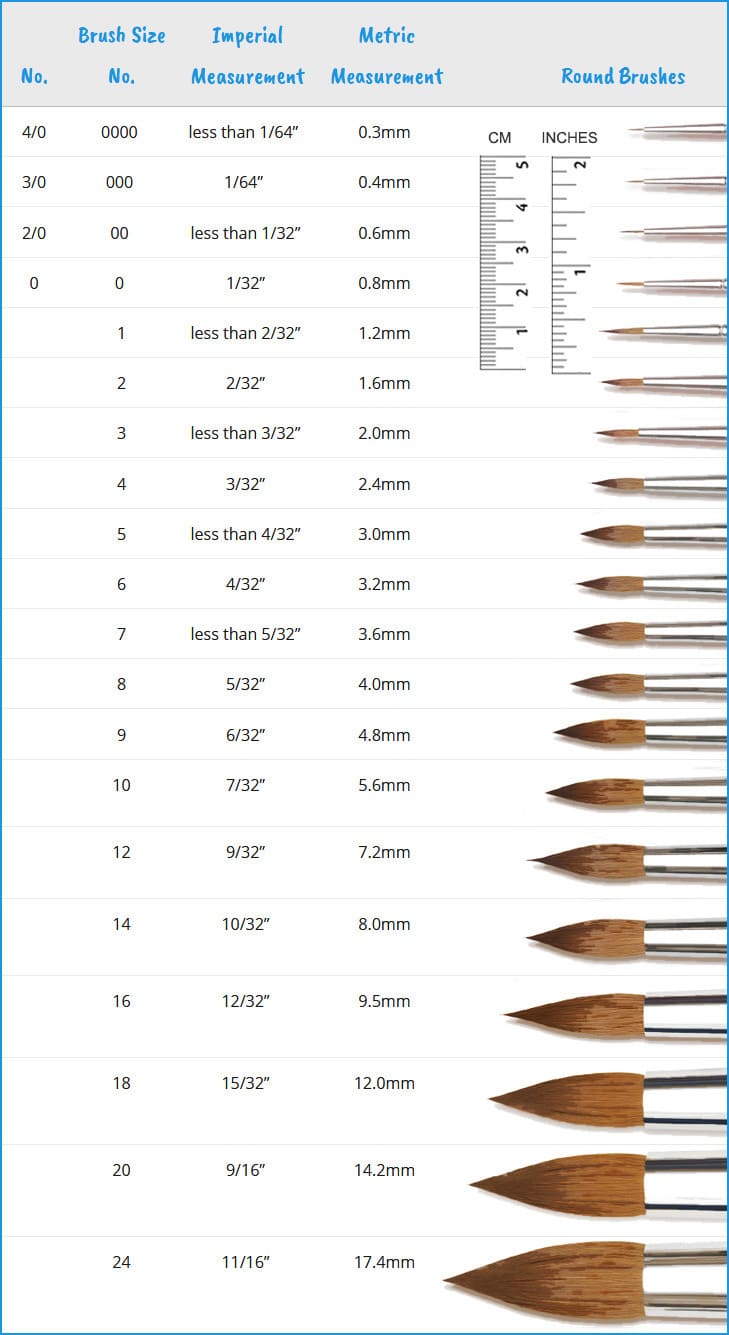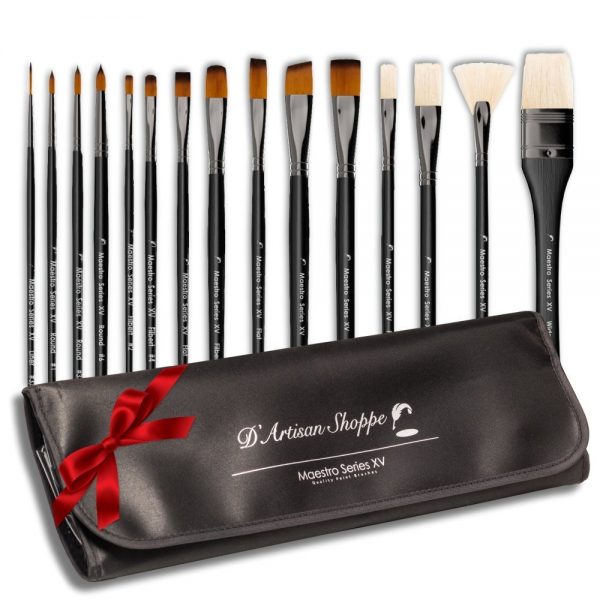Zero Rust is so easy to use, making it great for the DIYer. In this segment, LeeAnn shows how to apply Zero Rust to a car frame with nothing more than a cheapy paint brush! SKU: PPZR03 – Zero Rust Paint Pen, Black Refill Kit. SKU: AR-60 – Red Oxide Corrosion Barrier, Gallon. Brushes start from 000, then go to 00, 0, 1, 2, and up. The higher the number, the bigger or wider the brush. Unfortunately, there is little consistency between brush manufacturers as to what these sizes actually are, so the size of a No. 10 in one brand can be different from a No. 10 in another brand.
As we all know, brushes come in a variety of materials, shapes, and sizes.Most brushes have a handle, a ferrule (the object holding the bristles), andbristles made of synthetic or natural materials.The bristles have a length (measured from the ferrule to the tip) and a width(measured where the bristles exit the ferrule),but what's the brush number?This article describes the brush size numbering system that oftenappears on the handle of paint brushes.Basically, the numbering system is meant to order the sizes of brushes.The system begins at 0. Larger brushes are signified by increasing wholenumber values. Smaller brushes are signified by increasing the number ofzeros. The smaller sizes are often abbreviated with a slash notationending in '/0' and having a whole number for the number of zeros.Hence, the following two ordered ranges are equivalent:


Zero Number Paint Brushes
This photo shows a series of brushes from manufacturer Winsor & Newton(warning, this site requires the Flash 5 plugin).To the left of the U.S. penny are round sizes 000, 0, and 2.To the right is their 'round miniature' brush sizes 2, 0, and 00.As you can see, similarly numbered brushes are about the same size atthe ferrule, but even two round shapes can have different bristle sizes.There is no standard measurement system that the industry must follow.The comparison of round brushes to other shapes,and the introduction of metric and imperial measurementsmakes these numbers inconsistent between manufacturers.One site states that these measurements are roughly 1/32 of aninch, another site states 1/6 of an inch, and another states 1 mm.This table gives a common summary
| Size | Round Size | Flat/Other Size |
|---|---|---|
| 5/0 | <<1/64' | <<1/64' |
| 4/0 | <1/64' | <1/64' |
| 3/0 | 1/64' | 1/64' |
| 2/0 | <1/32' | <1/32' |
| 0 | 1/32' | 1/32' |
| 1 | 3/64' 2.7mm | 2/32' 5.3mm |
| 2 | 2/32' 3.1mm | 3/32' 6mm |
| 3 | 5/64' 4.2mm | 4/32' 6.5mm |
| 4 | 3/32' 5.5mm | 5/32' 9.2mm |
| 5 | 7/64' 6.3mm | 11/64' 10.1mm |
| 6 | 4/32' 7mm | 6/32' 11mm |
Zero Number Paint Brush
Some better suppliers perform their own brush size measurements.Blick Art Materials has somegreat reading material on brush sizes, shapes, and materials at:
Most miniature painters use a variety of brushes.The size of the brush generally determines how much paint you can loadand carry to your miniature, and how much paint is applied tothe miniature - the width and rate of paint application.For 15 and 28 mm miniatures, the brush sizes 000 through 2 are mostlikely the sizes you will use, with perhaps one or two other sizes forpriming and dry brushing and top coating.Be aware that the brush size notation is arcane and inconsistentfrom manufacturer to manufacturer.
More miniatures-related articles are atDan Becker's Miniatures and Models site.Thanks for stopping by and reading about my miniatures.
Last modified: Sunday, 28-Apr-2019 13:49:29 MST.

